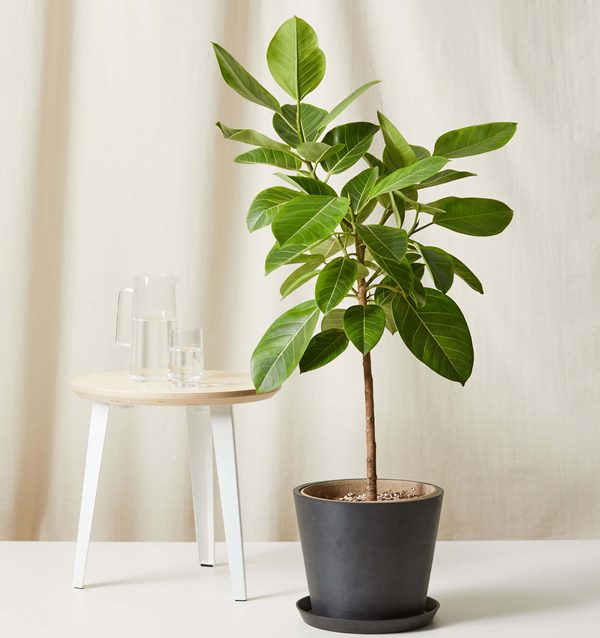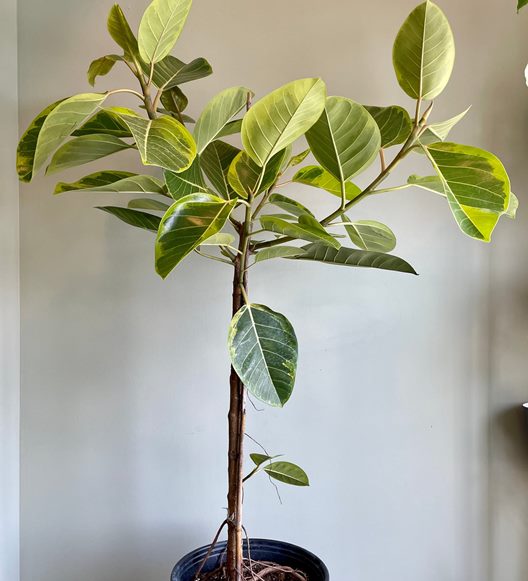How to Grow Ficus altissima in Container | Ficus altissima Care
Although Ficus altissima is a tree, it still grows well in the container! Learn how to Grow Ficus altissima in a container by going through this post.

Botanical Name: Ficus altissima
Common Names: Council tree, Asian council tree, or Lofty fig
Ficus altisimma or council tree is a perfect ornamental tree to create a grandeur effect in any space. It can grow to 30 feet tall in the natural habitat, but the good news is that in containers, it won’t grow that big. In fact, it only grows to six feet in containers! So, if you are looking for trees that grow well in containers, the Council tree tops the list. Let us dig more into how to Grow Ficus altissima in container!
How to Grow Ficus altissima in Container

Locate the container at a spot where it receives bright indirect light and morning sunlight. Water to keep the soil moist, but don’t let it turn soggy. Go for a standard houseplant potting mix or prepare it yourself. Temperature ranging from 65 to 75 degrees F is ideal. Fertilizing isn’t necessary, although to boost plants’ growth, use an organic fertilizer.
Propagating Ficus altissima
Apart from buying the potted plant from the nursery or garden store, there is the option of propagating Ficus as well. Air layering and propagation through cutting are the two methods in which you can propagate Ficus altissima. Here is how you propagate ficus altissima from cutting.
- Take cutting from a non-woody stem as it increases the chances of rooting an inch below the leaf node.
- Remove the leaves from the bottom half of the plant as it redirects plants’ energy towards rooting.
- Plant the cutting in a potting mix and make sure the mix remains moist.
- It’ll take around eight weeks for the root system to be well established; during this period, locate the cutting at a warm spot.
- Once the focus altisimma starts to show new growth, you can transplant it to a new pot.
Great! Now that you know to propagate, let’s learn more about how you can grow ficus altissima in the container!
Choosing the Container
Container size can range anywhere from 12-16 inches deep and wide, depending on the size of the plant at the time of planting. If you bought the plant from the nursery, the size of the new pot would depend on the size of the pot it came in. Don’t fret over the material of the pot!
Repotting
Repot the ficus altissima when roots start to come out from the bottom of the drainage holes. The new pot should be one or two sizes large than the old one but not too large. Do not use excessive force and carefully remove the loose soil around the rootball.
Location
It’ll happily thrive in bright indirect light, making it an ideal plant for indoor spaces. Place it near a large window, patio, corner of a well-lit foyer, or even in the balcony. Slowly increase the exposure to light as too much direct sun too soon will cause sunburned leaves. The formation of dry brown spots in the center of the leaves is a sign of too much exposure to direct sunlight.
Soil
Any standard houseplant potting mix will work just fine, or you can make the potting mix by yourself. An example of a good potting mix for the council tree includes perlite, composted pine bark, coir fiber or peat moss, and coarse sand in equal parts. Also, add two tbsp. of limestone if you use peat moss for the mix. To improve soil fertility, add one cup of organic granular fertilizer to the potting mix.
Watering
Water the plant thoroughly at the base and allow the excess water to drain out from the bottom of the pot. Water again when the soil becomes dry two inches below the surface which you can check by sticking your finger in the soil. Keep in mind that the watering cycles will change depending on the weather, location, and climatic conditions.
Ficus altissima Care

Temperature
As ficus altissima is native to the regions of southeastern Asia, it’s not tolerant to cold. Temperature ranging from 60 to 72 degrees F is well suited for the council tree. If the temperature falls below 55 degrees, F its bring the plant indoors. In colder regions, it’s better to relocate the ficus container indoors during winters.
Fertilizing
Boost the Ficus altissima growth by fertilizing it with a well-balanced slow-release fertilizer diluted half to its strength. Although if you are fine with the average growth of the plant, there isn’t a need to fertilize. Do not overfertilize the plant as it can lead to root burn and eventually untimely death of the plant. An ideal solution to this problem is using organic fertilizer as it won’t harm the sensitive root system of ficus altissima.
Pruning
The ideal time to prune is in late winters or early springs, as after that, the plant is ready for new growth. Cut back the dead and decaying leaves using sharp pruning shears. Pruning not only boosts new healthy growth but also keeps the plant in the desired shape. Whitish sap of this plant can cause irritation, so wear protective gears and be cautious!
Pests & Diseases
Common garden pests such as aphids and mealybugs can cause damage to the plant. Get rid of such pests by the application of neem oil solution or diluted soap solution. Leaf drop can occur due to sudden temperature changes. Black spots at the back of the leaves are due to Leaf Spot Fungus, cut and dispose of such infected leaves. Sulfur sprays or copper-based fungicides will prevent the spores from multiplying.
Ficus altissima Toxicity
Like other Moraceae family members, both Ficus Benjamina & Ficus altissima is toxic to pets. It can cause skin and gastrointestinal irritation when touched or consumed by pets. Keep it out of reach of pets and kids as well!





